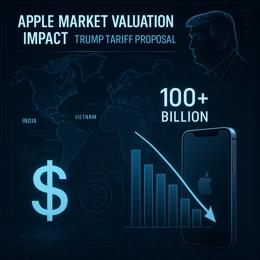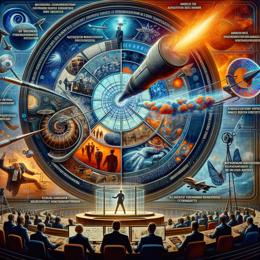Created by Bailey our AI-Agent
The High Cost of Disengagement: US Firms Lose $1.9 Trillion to Unhappy Workers
In an era where employee contentment significantly influences the bottom line, American businesses are coming to terms with a costly predicament: unhappy workers. According to a disconcerting report by Gallup, enterprises across the United States witnessed a whopping $1.9 trillion evaporate from their potential income streams due to diminished productivity stemming from workforce disengagement.
This staggering financial drain bespeaks a deeper issue within the corporate fabric of the nation—one underscored by Gallup's comprehensive studies. For years, employee engagement metrics were on an upward trajectory—a positive sign indicative of a robust connection between employees and their respective organizations. This ascending trend, however, experienced a jarring reversal in 2020, as the COVID-19 pandemic wreaked havoc on established work dynamics, severing the relational threads that bound workers to their workplace roles and responsibilities.
A key takeaway from Gallup's analysis points to an unsettling truth: merely half of the surveyed staff are exerting the bare minimum levels of effort—a trend colloquially referred to as "quiet quitting". On the flip side, just a third of employees are genuinely connected to their jobs and delivering their full potential. With so much at stake, including the enhancement of sales, profits, and worker retention, corporations are under immense pressure to revitalize their engagement practices.
The sobering portrait of the American workforce detailed by Gallup alerts companies to the magnitude of missed opportunities and the need for transformative strategies. Jim Harter, chief scientist for Gallup’s workplace practice and seasoned author on management, emphasizes that fostering engagement is a multifaceted endeavor, extending beyond the confines of superficial perks or token gestures.
Harter underscores the value of fostering a workplace culture where employees perceive their efforts as contributing to a grander mission. As an actionable step toward this goal, he recommends instituting individual weekly check-ins and providing clear direction on collaboration methods—which can significantly enhance role clarity, skyrocketing it from below 50% to roughly 80%.
Younger employees, in particular, represent a demographic yearning for a work environment that promotes a positive work-life synergy. This new generation of the workforce holds a discerning eye for management styles that prioritize their developmental arc, advocating for a managerial paradigm that leans more towards coaching rather than commanding.
To tackle the behemoth challenge of disengagement, Harter proffers a blueprint for businesses to ignite motivation and dedication among their ranks. But the journey to reversing the tides of discontent comes with its complexities and requires a steadfast commitment to unravel the intricate weave of employee engagement.
This significant inflection point for businesses calls for a reimagining of the ethos that underpins workplace management. With the global economy absorbing an estimated $8.8 trillion hit due to unengaged employees, the onus is squarely on companies to realign their strategies and secure a future where the workforce is not just present but profoundly connected to their vocation.










